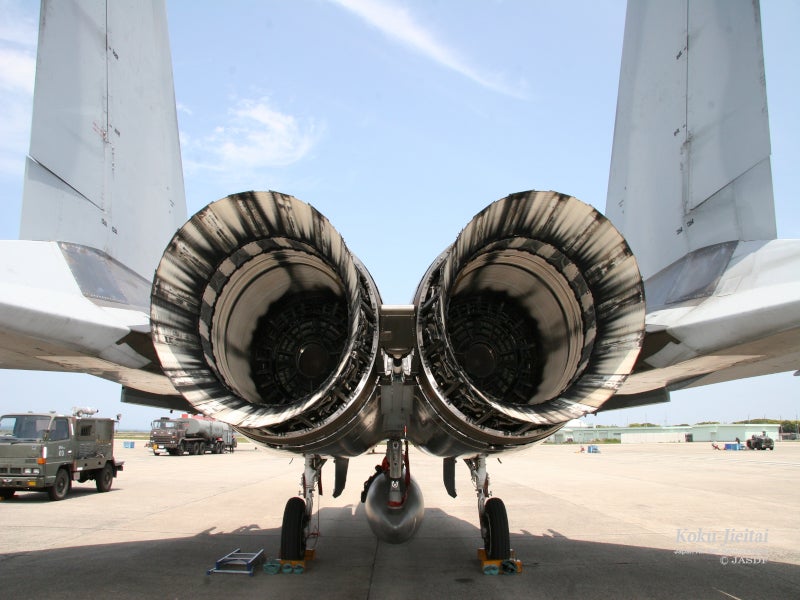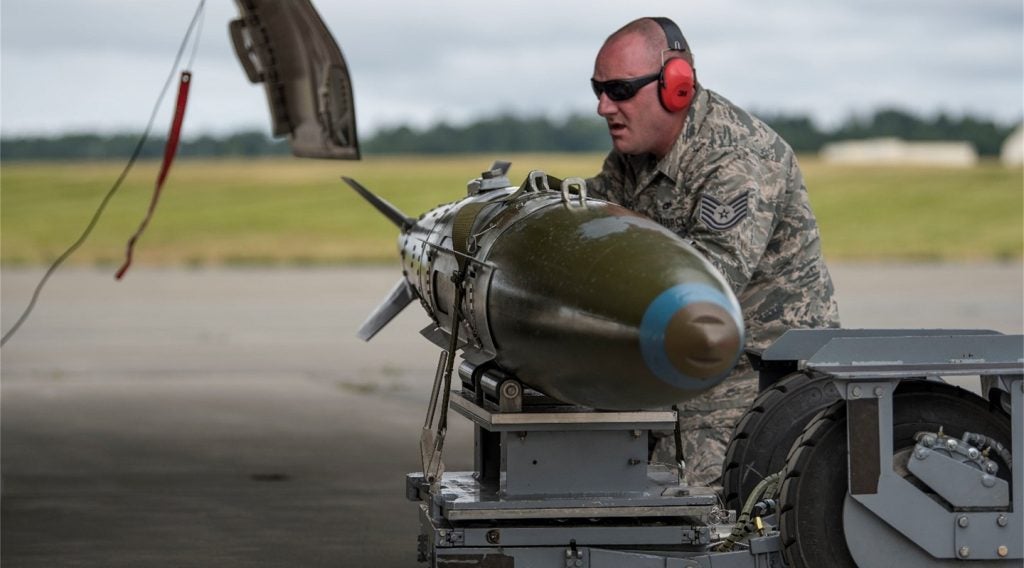F-15J aircraft, commonly referred to as ‘Eagle’, is a supersonic fighter aircraft with all-weather air superiority for multi-role missions.
Developed by Boeing, F-15J aircraft made its first flight in 1972. Mitsubishi Heavy Industries (MHI), which is the primary contractor for manufacturing the aircraft under licence from Boeing, built more than 200 aircraft. The aircraft, based on the F-15C Eagle, is operated by the Japan Air Self-Defence Force (JASDF). The US Government approved a $4.5bn worth package for the upgrade of up to 98 F-15J fighter aircraft to a Japanese Super Interceptor (JSI) configuration in October 2019. Boeing is the prime contractor for the upgrade programme, while MHI is serving as the prime contractor for direct commercial sale (DCS) portion.
The two companies reached a DCS agreement to support the F-15J fleet modernisation programme in July 2020. The detailed modification plan of the aircraft and development of facilities and workforce for the programme will be carried out by MHI to facilitate the start of the upgrade programme in 2022.
Sojitz Corporation, which works with Boeing in Japan, will also support the programme.
F-15J aircraft technical specifications
F-15J is a 19.4m-long aircraft with a wingspan of 13.1m and height of 5.6m. The gross weight of the fighter is approximately 25,000kg. The maximum cruising range of the aircraft is approximately 2,500nm (4,600km). It can accommodate a maximum of two crew members and reach a maximum combat ceiling of 70,000ft with a combat radius of over 1,100nm.
Cockpit and avionics
The aircraft features advanced cockpit equipped with large area display (LAD) dual seat JHMCS-II reference standby displays.
The F-15’s projection display unit is a 4.5in-by-4.5in reflective micro Liquid Crystal Display (LCD) projection-based smart display. It has high optic capabilities for head-up and helmet-mounted displays.
Avionics onboard the aircraft include advanced display core processor (ADCP) II, ARC-210 Radio w/ secure voice video recorder and map set (VRAMS). The JASDF’s F-15J is fitted with XJ/APQ-1 rear warning receiver.
The fighter jet is equipped with digital fly-by-wire (FBW) flight control system with quad channel FBW actuators rudders and stabilators and dual channel FBW Actuators ailerons.
Sensors
F-15J is equipped with APG-82(V)1 active electronically scanned array (AESA) radar and advanced digital electronic warfare system (DEWS) sensors. The AESA radar provides increased survivability and mission effectiveness.
F-15J fighter aircraft weapon systems
F-15J aircraft has expanded weapon carriage, which can carry 12 missiles and 24 air-to-ground munitions in a single flight.
It can be fitted with a 20mm class machine gun, four air-to-air radar missiles, and four air-to-air infrared missiles. Other missiles including AGM-158B Joint Air-to-Surface Stand-off Missile- Extended Range (JASSM-ER) and AGM-158C Long Range Anti-Ship Missile (LRASM) can also be fired from the aircraft.
The aircraft can accommodate maximum weapon payload of 29,500lbs and can deliver a variety of precision weapons.
Engine
Two F100-PW(IHI)-220E Turbofan engines with afterburner are fitted to the F-15J jet. Each engine produces a thrust of 25,000lb and allows the aircraft to attain a maximum speed of M2.5 (1,875mph) flying at an altitude of 45,000ft.
F-15J aircraft modification programme
The modification programme of the F-15J jet will include the installation of state-of-the-art electronic warfare and weapons in the aircraft.
An all-new advanced cockpit system will be introduced with an advanced mission computer for improved situational awareness.
Under the modernisation programme, Japan is procuring up to 103 Raytheon Technologies’ APG-82(V)1 AESA radar sets, 116 ADCP II mission system computers and 101 ALQ-239 DEWS electronic warfare devices.
The joint mission planning system (JMPS) with software, selective availability anti-spoofing module (SAASM), ARC-210 radio, aircraft and munition integration and test support will also be integrated into the aircraft.
The modification will enhance the air defence capabilities of the Japanese air force by improving the airspace defence and response to the air-borne threats.
Other upgrades
A previous modification programme for improved radar, computer and EW suites was performed in 1997. The modified aircraft was delivered in December 2000.
Rockwell Collins signed a contract with Japanese firm Shimadzu for providing technical data package and design support for the development of F-15J’s projection display unit, in July 2003.
Japan modified an unknown number of F-15J for reconnaissance duties, using Lockheed Martin’s Phoenix Eye SAR pods in 2007.
TAURUS Systems, a Germany-based company, was contracted to integrate its TAURUS KEPD 350E air-to-ground cruise missile into Japan’s F-15J aircraft.










